
Top ▲

GtoPdb is requesting financial support from commercial users. Please see our sustainability page for more information.
Gene and Protein Information  |
||||||
| class C G protein-coupled receptor | ||||||
| Species | TM | AA | Chromosomal Location | Gene Symbol | Gene Name | Reference |
| Human | 7 | 1194 | 6q24.3 | GRM1 | glutamate metabotropic receptor 1 | 20,33,101 |
| Mouse | 7 | 1199 | 10 A1 | Grm1 | glutamate receptor, metabotropic 1 | 125 |
| Rat | 7 | 1199 | 1p13 | Grm1 | glutamate metabotropic receptor 1 | 44,77 |
Previous and Unofficial Names  |
| GPRC1A | metabotropic glutamate receptor 1 | wobl | MGLUR1 | SCAR13 | glutamate receptor, metabotropic 1 | glutamate receptor |
Database Links  |
|
| Specialist databases | |
| GPCRdb | grm1_human (Hs), grm1_mouse (Mm), grm1_rat (Rn) |
| Other databases | |
| Alphafold | Q13255 (Hs), P97772 (Mm), P23385 (Rn) |
| ChEMBL Target | CHEMBL3772 (Hs), CHEMBL2892 (Mm), CHEMBL4477 (Rn) |
| Ensembl Gene | ENSG00000152822 (Hs), ENSMUSG00000019828 (Mm), ENSRNOG00000068415 (Rn), ENSRNOG00000014290 (Rn) |
| Entrez Gene | 2911 (Hs), 14816 (Mm), 24414 (Rn) |
| Human Protein Atlas | ENSG00000152822 (Hs) |
| KEGG Gene | hsa:2911 (Hs), mmu:14816 (Mm), rno:24414 (Rn) |
| OMIM | 604473 (Hs) |
| Orphanet | ORPHA327283 (Hs) |
| Pharos | Q13255 (Hs) |
| RefSeq Nucleotide | NM_001278067 (Hs), NM_001278066 (Hs), NM_001278064 (Hs), NM_001278065 (Hs), NM_016976 (Mm), NM_001114333 (Mm), NM_017011 (Rn), NM_001114330 (Rn) |
| RefSeq Protein | NP_001264995 (Hs), NP_001264994 (Hs), NP_001264996 (Hs), NP_001264993 (Hs), NP_001107805 (Mm), NP_058672 (Mm), NP_001107802 (Rn), NP_058707 (Rn) |
| UniProtKB | Q13255 (Hs), P97772 (Mm), P23385 (Rn) |
| Wikipedia | GRM1 (Hs) |
Selected 3D Structures  |
|||||||||||||
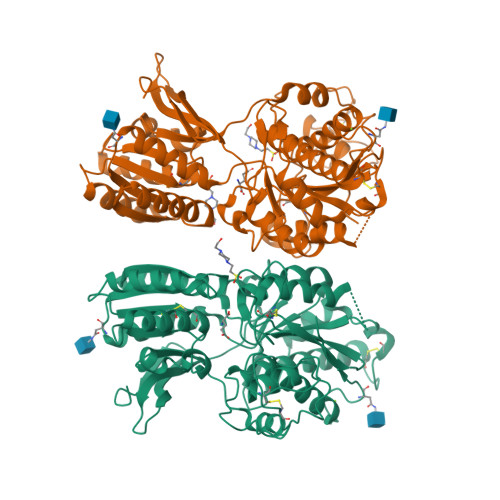
|
|
||||||||||||
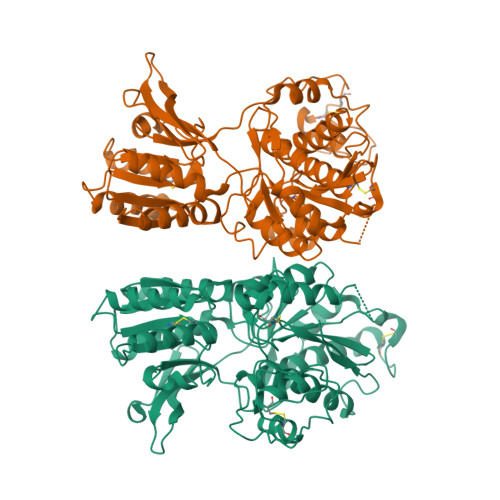
|
|
||||||||||||
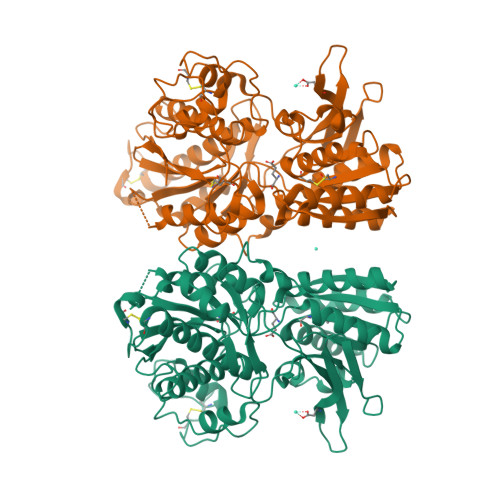
|
|
||||||||||||
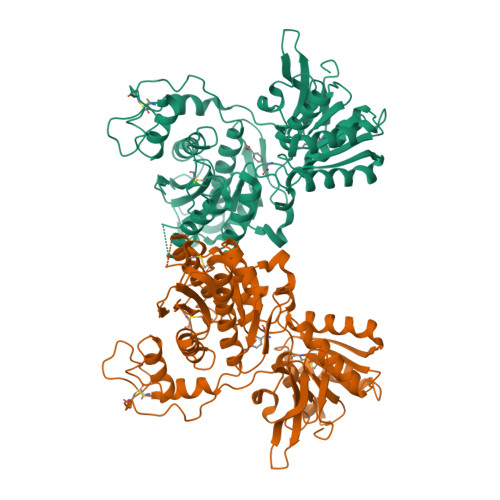
|
|
||||||||||||
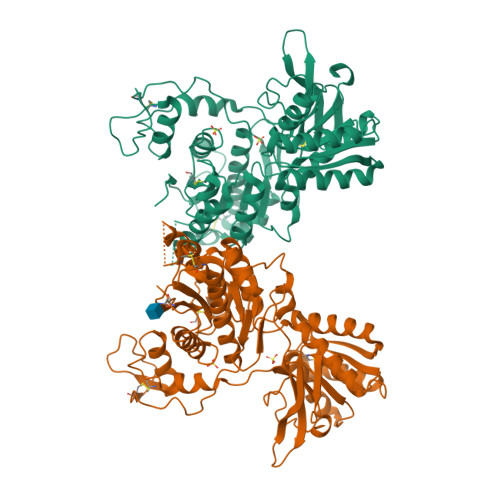
|
|
||||||||||||
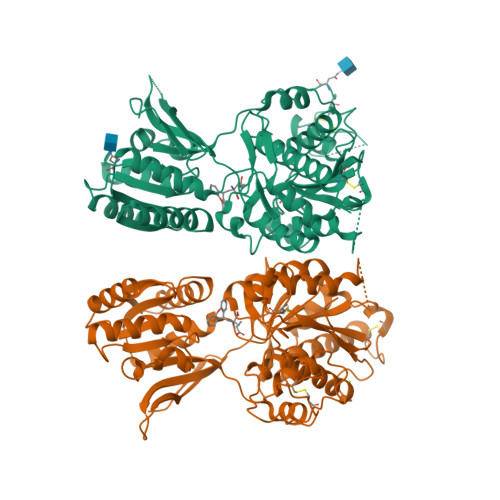
|
|
||||||||||||
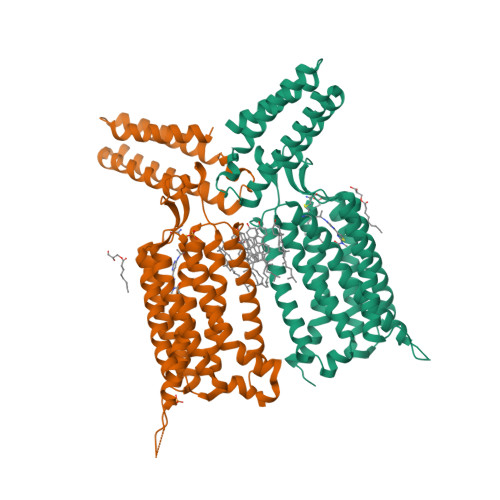
|
|
||||||||||||
Natural/Endogenous Ligands  |
| L-glutamic acid |
| Comments: Other endogenous ligands include L-aspartic acid, L-serine-O-phosphate, NAAG and L-cysteine sulphinic acid |
Download all structure-activity data for this target as a CSV file 
| Agonists | |||||||||||||||||||||||||||||||||||||||||||||||||||||||||||||||||||||||||||||||||||||||||||||||||||||||||||||||||||||||||||||||||||||||||||||||||||||||||||||||||||||||||||||||||||||||||||||||||||||||||||||||||||||||||||||||||||||||||||||||||||||||||||||||||||||||||||||||||||||||||||||||||||||||||||||||||||
| Key to terms and symbols | View all chemical structures | Click column headers to sort | |||||||||||||||||||||||||||||||||||||||||||||||||||||||||||||||||||||||||||||||||||||||||||||||||||||||||||||||||||||||||||||||||||||||||||||||||||||||||||||||||||||||||||||||||||||||||||||||||||||||||||||||||||||||||||||||||||||||||||||||||||||||||||||||||||||||||||||||||||||||||||||||||||||||||||||||||
|
|||||||||||||||||||||||||||||||||||||||||||||||||||||||||||||||||||||||||||||||||||||||||||||||||||||||||||||||||||||||||||||||||||||||||||||||||||||||||||||||||||||||||||||||||||||||||||||||||||||||||||||||||||||||||||||||||||||||||||||||||||||||||||||||||||||||||||||||||||||||||||||||||||||||||||||||||||
| View species-specific agonist tables | |||||||||||||||||||||||||||||||||||||||||||||||||||||||||||||||||||||||||||||||||||||||||||||||||||||||||||||||||||||||||||||||||||||||||||||||||||||||||||||||||||||||||||||||||||||||||||||||||||||||||||||||||||||||||||||||||||||||||||||||||||||||||||||||||||||||||||||||||||||||||||||||||||||||||||||||||||
| Agonist Comments | |||||||||||||||||||||||||||||||||||||||||||||||||||||||||||||||||||||||||||||||||||||||||||||||||||||||||||||||||||||||||||||||||||||||||||||||||||||||||||||||||||||||||||||||||||||||||||||||||||||||||||||||||||||||||||||||||||||||||||||||||||||||||||||||||||||||||||||||||||||||||||||||||||||||||||||||||||
| Values indicated are those determined from binding studies on recombinant mGlu1a receptors. Further information on agonist pharmacology as based on functional assays can be found in [95]. So far no differences in the agonist pharmacological profile has been reported between the rat and human mGlu1 receptors using functional assays. The best characterized agonists of the ionotropic glutamate receptors, AMPA, NMDA and kainate are inactive on mGlu1. Although several splice variants of mGlu1 have been identified (see below), all are likely to have an identical agonist pharmacology since they possess an indentical agonist binding site. The agonist binding site is located in the large extracellular domain of this receptor, that retains its ability to bind ligands when produced as a soluble protein. The structure of this binding domain has been solved [57,114]. This domain is formed of two lobes, and agonists bind in the cleft between the two lobes. Agonists likely stabilize a closed form of this domain, whereas antagonists prevent closure. Functional importance of critical residues involved in agonist action has been confirmed by mutagenesis studies [84,93]. Cations such as Ca2+ have been proposed to directly activate mGlu1 receptors [28,56,109]. However, it is still unclear whether this is a direct agonist effect or if this is due to a potentiation of ambient glutamate produced by the cells expressing the recombinant receptor. |
|||||||||||||||||||||||||||||||||||||||||||||||||||||||||||||||||||||||||||||||||||||||||||||||||||||||||||||||||||||||||||||||||||||||||||||||||||||||||||||||||||||||||||||||||||||||||||||||||||||||||||||||||||||||||||||||||||||||||||||||||||||||||||||||||||||||||||||||||||||||||||||||||||||||||||||||||||
| Antagonists | |||||||||||||||||||||||||||||||||||||||||||||||||||||||||||||||||||||||||||||||||||||||||||||||||||||||||||||||||||||||||||||||||||||||||||||||||||||||||||||||||||||||||||||||||||||||||||||||||||||||||||||||||||||||||||||||||||||||||||||||||||||||||||||||||||||||||||||||||||||||||||||||||||||||||||||||||||||||||||||||||||||||||||||||||||||||||||||||||||||||||||||||||||||||||||||||||||||||||||||||||||||||||||||||||||||||||||||||||||
| Key to terms and symbols | View all chemical structures | Click column headers to sort | |||||||||||||||||||||||||||||||||||||||||||||||||||||||||||||||||||||||||||||||||||||||||||||||||||||||||||||||||||||||||||||||||||||||||||||||||||||||||||||||||||||||||||||||||||||||||||||||||||||||||||||||||||||||||||||||||||||||||||||||||||||||||||||||||||||||||||||||||||||||||||||||||||||||||||||||||||||||||||||||||||||||||||||||||||||||||||||||||||||||||||||||||||||||||||||||||||||||||||||||||||||||||||||||||||||||||||||||||
|
|||||||||||||||||||||||||||||||||||||||||||||||||||||||||||||||||||||||||||||||||||||||||||||||||||||||||||||||||||||||||||||||||||||||||||||||||||||||||||||||||||||||||||||||||||||||||||||||||||||||||||||||||||||||||||||||||||||||||||||||||||||||||||||||||||||||||||||||||||||||||||||||||||||||||||||||||||||||||||||||||||||||||||||||||||||||||||||||||||||||||||||||||||||||||||||||||||||||||||||||||||||||||||||||||||||||||||||||||||
| View species-specific antagonist tables | |||||||||||||||||||||||||||||||||||||||||||||||||||||||||||||||||||||||||||||||||||||||||||||||||||||||||||||||||||||||||||||||||||||||||||||||||||||||||||||||||||||||||||||||||||||||||||||||||||||||||||||||||||||||||||||||||||||||||||||||||||||||||||||||||||||||||||||||||||||||||||||||||||||||||||||||||||||||||||||||||||||||||||||||||||||||||||||||||||||||||||||||||||||||||||||||||||||||||||||||||||||||||||||||||||||||||||||||||||
| Antagonist Comments | |||||||||||||||||||||||||||||||||||||||||||||||||||||||||||||||||||||||||||||||||||||||||||||||||||||||||||||||||||||||||||||||||||||||||||||||||||||||||||||||||||||||||||||||||||||||||||||||||||||||||||||||||||||||||||||||||||||||||||||||||||||||||||||||||||||||||||||||||||||||||||||||||||||||||||||||||||||||||||||||||||||||||||||||||||||||||||||||||||||||||||||||||||||||||||||||||||||||||||||||||||||||||||||||||||||||||||||||||||
| Indicated affinities were determined by displacement studies of [3H]quisqualate bound on HEK cell membranes expressing a recombinant rat mGlu1 (except for LY341495 value determined from functional studies). More information on agonist potencies determined from functional studies can be obtained from [95]. So far no differences have been reported for the antagonist affinities between the rat and the human receptor. Although LY367385 and AIDA have been shown to specifically antagonize mGlu1 receptors versus mGlu5, both compounds are able to displace bound [3H]quisqualate to mGlu5 (see [95]). | |||||||||||||||||||||||||||||||||||||||||||||||||||||||||||||||||||||||||||||||||||||||||||||||||||||||||||||||||||||||||||||||||||||||||||||||||||||||||||||||||||||||||||||||||||||||||||||||||||||||||||||||||||||||||||||||||||||||||||||||||||||||||||||||||||||||||||||||||||||||||||||||||||||||||||||||||||||||||||||||||||||||||||||||||||||||||||||||||||||||||||||||||||||||||||||||||||||||||||||||||||||||||||||||||||||||||||||||||||
| Allosteric Modulators | |||||||||||||||||||||||||||||||||||||||||||||||||||||||||||||||||||||||||||||||||||||||||||||||||||||||||||||||||||||||||||||||||||||||||||||||||||||||||||||||||||||||||||||||||||||||||||||||||||||||||||||||||||||||||||||||||||||||||||||||||||||||||||||||||||||||||||||||||||||||||||||||||||||||||||||||||||||||||||||||||||||||||||||||||||||||||||||||||||||||||||||||||||||||||||||||||||||||||||||||||||||||||||||||||||||||||||||||||||||||||||||||||||||||||||||||||||||||||||||||||||||||||||||||||||||||||||||||||||||||||||||||||||||||||||||||||||||||||||||||||||||||||||||||||||||||||||||||||||||||||||||||||||||||||||||||||||||||||||||||||||||||||||||||||||||||||||||||||||||||||||||||||||||||||||||||||||||||||||||||||||||||||||||||||||||||||||||||||||||||||||||||||||||||||||||||||||||||||||||||||||||||||||||||||||||||||||||||||||||||||||||||||||||||||||||||||||||||||||||||||||||||||||||||||||||||||||||||||||||||||||||||||||||||||||||||||||||||||||||||||||||||||||||||||||||||||||||||||||||||
| Key to terms and symbols | View all chemical structures | Click column headers to sort | |||||||||||||||||||||||||||||||||||||||||||||||||||||||||||||||||||||||||||||||||||||||||||||||||||||||||||||||||||||||||||||||||||||||||||||||||||||||||||||||||||||||||||||||||||||||||||||||||||||||||||||||||||||||||||||||||||||||||||||||||||||||||||||||||||||||||||||||||||||||||||||||||||||||||||||||||||||||||||||||||||||||||||||||||||||||||||||||||||||||||||||||||||||||||||||||||||||||||||||||||||||||||||||||||||||||||||||||||||||||||||||||||||||||||||||||||||||||||||||||||||||||||||||||||||||||||||||||||||||||||||||||||||||||||||||||||||||||||||||||||||||||||||||||||||||||||||||||||||||||||||||||||||||||||||||||||||||||||||||||||||||||||||||||||||||||||||||||||||||||||||||||||||||||||||||||||||||||||||||||||||||||||||||||||||||||||||||||||||||||||||||||||||||||||||||||||||||||||||||||||||||||||||||||||||||||||||||||||||||||||||||||||||||||||||||||||||||||||||||||||||||||||||||||||||||||||||||||||||||||||||||||||||||||||||||||||||||||||||||||||||||||||||||||||||||||||||||||||||||
|
|||||||||||||||||||||||||||||||||||||||||||||||||||||||||||||||||||||||||||||||||||||||||||||||||||||||||||||||||||||||||||||||||||||||||||||||||||||||||||||||||||||||||||||||||||||||||||||||||||||||||||||||||||||||||||||||||||||||||||||||||||||||||||||||||||||||||||||||||||||||||||||||||||||||||||||||||||||||||||||||||||||||||||||||||||||||||||||||||||||||||||||||||||||||||||||||||||||||||||||||||||||||||||||||||||||||||||||||||||||||||||||||||||||||||||||||||||||||||||||||||||||||||||||||||||||||||||||||||||||||||||||||||||||||||||||||||||||||||||||||||||||||||||||||||||||||||||||||||||||||||||||||||||||||||||||||||||||||||||||||||||||||||||||||||||||||||||||||||||||||||||||||||||||||||||||||||||||||||||||||||||||||||||||||||||||||||||||||||||||||||||||||||||||||||||||||||||||||||||||||||||||||||||||||||||||||||||||||||||||||||||||||||||||||||||||||||||||||||||||||||||||||||||||||||||||||||||||||||||||||||||||||||||||||||||||||||||||||||||||||||||||||||||||||||||||||||||||||||||||||
| View species-specific allosteric modulator tables | |||||||||||||||||||||||||||||||||||||||||||||||||||||||||||||||||||||||||||||||||||||||||||||||||||||||||||||||||||||||||||||||||||||||||||||||||||||||||||||||||||||||||||||||||||||||||||||||||||||||||||||||||||||||||||||||||||||||||||||||||||||||||||||||||||||||||||||||||||||||||||||||||||||||||||||||||||||||||||||||||||||||||||||||||||||||||||||||||||||||||||||||||||||||||||||||||||||||||||||||||||||||||||||||||||||||||||||||||||||||||||||||||||||||||||||||||||||||||||||||||||||||||||||||||||||||||||||||||||||||||||||||||||||||||||||||||||||||||||||||||||||||||||||||||||||||||||||||||||||||||||||||||||||||||||||||||||||||||||||||||||||||||||||||||||||||||||||||||||||||||||||||||||||||||||||||||||||||||||||||||||||||||||||||||||||||||||||||||||||||||||||||||||||||||||||||||||||||||||||||||||||||||||||||||||||||||||||||||||||||||||||||||||||||||||||||||||||||||||||||||||||||||||||||||||||||||||||||||||||||||||||||||||||||||||||||||||||||||||||||||||||||||||||||||||||||||||||||||||||||
| Allosteric Modulator Comments | |||||||||||||||||||||||||||||||||||||||||||||||||||||||||||||||||||||||||||||||||||||||||||||||||||||||||||||||||||||||||||||||||||||||||||||||||||||||||||||||||||||||||||||||||||||||||||||||||||||||||||||||||||||||||||||||||||||||||||||||||||||||||||||||||||||||||||||||||||||||||||||||||||||||||||||||||||||||||||||||||||||||||||||||||||||||||||||||||||||||||||||||||||||||||||||||||||||||||||||||||||||||||||||||||||||||||||||||||||||||||||||||||||||||||||||||||||||||||||||||||||||||||||||||||||||||||||||||||||||||||||||||||||||||||||||||||||||||||||||||||||||||||||||||||||||||||||||||||||||||||||||||||||||||||||||||||||||||||||||||||||||||||||||||||||||||||||||||||||||||||||||||||||||||||||||||||||||||||||||||||||||||||||||||||||||||||||||||||||||||||||||||||||||||||||||||||||||||||||||||||||||||||||||||||||||||||||||||||||||||||||||||||||||||||||||||||||||||||||||||||||||||||||||||||||||||||||||||||||||||||||||||||||||||||||||||||||||||||||||||||||||||||||||||||||||||||||||||||||||||
| Values for Ro67-4853 and Ro67-7476 were determined by binding studies using [3H]R214127 binding [59] or from functional studies [11,53,65]. Among these allosteric regulators only NPS2390 is not mGlu1 selective, being also active as a negative allosteric modulator of mGlu5. Among the positive modulators, only Ro67-4853 is active on the human receptor [53]. The binding site of all allosteric regulators have been mapped within the 7 transmembrane domain of the receptor [11,53,65,71]. | |||||||||||||||||||||||||||||||||||||||||||||||||||||||||||||||||||||||||||||||||||||||||||||||||||||||||||||||||||||||||||||||||||||||||||||||||||||||||||||||||||||||||||||||||||||||||||||||||||||||||||||||||||||||||||||||||||||||||||||||||||||||||||||||||||||||||||||||||||||||||||||||||||||||||||||||||||||||||||||||||||||||||||||||||||||||||||||||||||||||||||||||||||||||||||||||||||||||||||||||||||||||||||||||||||||||||||||||||||||||||||||||||||||||||||||||||||||||||||||||||||||||||||||||||||||||||||||||||||||||||||||||||||||||||||||||||||||||||||||||||||||||||||||||||||||||||||||||||||||||||||||||||||||||||||||||||||||||||||||||||||||||||||||||||||||||||||||||||||||||||||||||||||||||||||||||||||||||||||||||||||||||||||||||||||||||||||||||||||||||||||||||||||||||||||||||||||||||||||||||||||||||||||||||||||||||||||||||||||||||||||||||||||||||||||||||||||||||||||||||||||||||||||||||||||||||||||||||||||||||||||||||||||||||||||||||||||||||||||||||||||||||||||||||||||||||||||||||||||||||
Primary Transduction Mechanisms 
|
|
| Transducer | Effector/Response |
| Gq/G11 family | Phospholipase C stimulation |
| Comments: The primary action of the mGlu1 is to activate PLC through stimulating Gq/11, resulting in the PIP2 breakdown which can be monitored as the production of inositol phosphate. The PIP2 breakdown causes the increases in the intracellular calcium concentration and the activation of the TRPC channels [39]. The primary transduction is observed both in cell lines and the native tissue expressing the mGlu1. | |
| References: 3,17,25,88 | |
Secondary Transduction Mechanisms  |
|
| Transducer | Effector/Response |
|
Gs family Gi/Go family G protein independent mechanism |
Adenylyl cyclase stimulation Adenylyl cyclase inhibition Phospholipase A2 stimulation Phospholipase D stimulation Other - See Comments |
| Comments: Stimulation of adenylyl cyclase via mGlu1 has been reported in transfected cell lines [25] and suggested in neuronal cells [104]. Activation of the mGlu1 triggers the PTX-sensitive Gi/o signaling pathway in transfected cell lines, but its physiological role is unclear. The mGlu1 also induces the phospohrylation of the ERK in the G protein dependent and independent manner. In the latter case, the effects are mediated via beta-arrestin and dependent on the type of the ligands [23]. Activation of PLD has been reported in a cell line and native tissues [25,96]. The mGlu1 has been reported to activate the TRPC1 channels indepedently of G protein [51]. | |
| References: 3,17,25,88 | |
Tissue Distribution 
|
||||||||
|
||||||||
|
||||||||
|
||||||||
|
||||||||
|
||||||||
|
||||||||
|
||||||||
|
||||||||
|
||||||||
|
||||||||
|
||||||||
|
||||||||
|
||||||||
|
||||||||
|
||||||||
|
||||||||
|
||||||||
|
||||||||
|
||||||||
|
||||||||
|
||||||||
|
||||||||
|
||||||||
|
||||||||
|
||||||||
|
Expression Datasets  |
|
|
Functional Assays 
|
||||||||||
|
||||||||||
|
||||||||||
|
||||||||||
|
||||||||||
|
||||||||||
|
||||||||||
|
||||||||||
|
||||||||||
|
Physiological Functions 
|
||||||||
|
||||||||
|
||||||||
|
||||||||
|
||||||||
|
||||||||
|
||||||||
|
Physiological Consequences of Altering Gene Expression 
|
||||||||||
|
||||||||||
|
||||||||||
|
||||||||||
|
||||||||||
|
||||||||||
|
||||||||||
|
||||||||||
|
Phenotypes, Alleles and Disease Models 
|
Mouse data from MGI | ||||||||||||||||||||||||||||||||||||||||||||||||||||||||||||||||||||||||||||||||||||||||||||||||||||||||||||||||||||||||||||||||||||||||||||||||||||||||||||||||||||||||||||||||||||||||||||||||||||||||||||||||||||||||||||||||||||||||||||||||||||||||||||||||||||||||||||||||||||||||||||||||||||||||||||||||||||||||||||||||||||||||||||||||
|
|||||||||||||||||||||||||||||||||||||||||||||||||||||||||||||||||||||||||||||||||||||||||||||||||||||||||||||||||||||||||||||||||||||||||||||||||||||||||||||||||||||||||||||||||||||||||||||||||||||||||||||||||||||||||||||||||||||||||||||||||||||||||||||||||||||||||||||||||||||||||||||||||||||||||||||||||||||||||||||||||||||||||||||||||
Clinically-Relevant Mutations and Pathophysiology 
|
||||||||||||||||||||||||||||||||
|
||||||||||||||||||||||||||||||||
| Clinically-Relevant Mutations and Pathophysiology Comments | ||||||||||||||||||||||||||||||||
| In patients with congenital cerebellar ataxia, the mutated receptor is predicted not to possess the 7 transmembrane domain and therefore to be nonfunctional. Besides mutation, autoantibodies against the mGlu1 receptor have been reported in patients with paraneoplastic cerebellar ataxia [16,99]. |
||||||||||||||||||||||||||||||||
Biologically Significant Variants 
|
||||||||||||||
|
||||||||||||||
|
||||||||||||||
|
||||||||||||||
|
||||||||||||||
|
||||||||||||||
|
||||||||||||||
|
||||||||||||||
|
||||||||||||||
| Biologically Significant Variant Comments | ||||||||||||||
| In humans mGlu1, mGlu1(c) and mGlu1(e) have not been identified. The amino acid sequence of the mGlu1(f) is predicted to be same as the mGlu1(b). Genomic data supports the existance of mGlu(1d) in mice According to genomic sequences mGlu1e appears possible in rat but does not seem to be present in human genomic sequences. |
1. Aiba A, Chen C, Herrup K, Rosenmund C, Stevens CF, Tonegawa S. (1994) Reduced hippocampal long-term potentiation and context-specific deficit in associative learning in mGluR1 mutant mice. Cell, 79: 365-375. [PMID:7954802]
2. Aiba A, Kano M, Chen C, Stanton ME, Fox GD, Herrup K, Zwingman TA, Tonegawa S. (1994) Deficient cerebellar long-term depression and impaired motor learning in mGluR1 mutant mice. Cell, 79 (2): 377-88. [PMID:7954803]
3. Anwyl R. (1999) Metabotropic glutamate receptors: electrophysiological properties and role in plasticity. Brain Res Brain Res Rev, 29 (1): 83-120. [PMID:9974152]
4. Aramori I, Nakanishi S. (1992) Signal transduction and pharmacological characteristics of a metabotropic glutamate receptor, mGluR1, in transfected CHO cells. Neuron, 8 (4): 757-65. [PMID:1314623]
5. Baude A, Nusser Z, Roberts JD, Mulvihill E, McIlhinney RA, Somogyi P. (1993) The metabotropic glutamate receptor (mGluR1 alpha) is concentrated at perisynaptic membrane of neuronal subpopulations as detected by immunogold reaction. Neuron, 11 (4): 771-87. [PMID:8104433]
6. Bennett CE, Burnett DA, Greenlee WJ, Knutson CE, Korakas P, Li C, Tulshian D, Wu WL, Bertorelli R, Fredduzzi S et al.. (2012) Fused tricyclic mGluR1 antagonists for the treatment of neuropathic pain. Bioorg Med Chem Lett, 22 (4): 1575-8. [PMID:22266036]
7. Berthele A, Laurie DJ, Platzer S, Zieglgänsberger W, Tölle TR, Sommer B. (1998) Differential expression of rat and human type I metabotropic glutamate receptor splice variant messenger RNAs. Neuroscience, 85 (3): 733-49. [PMID:9639268]
8. Bhave G, Karim F, Carlton SM, Gereau 4th RW. (2001) Peripheral group I metabotropic glutamate receptors modulate nociception in mice. Nat Neurosci, 4 (4): 417-23. [PMID:11276233]
9. Brody SA, Conquet F, Geyer MA. (2003) Disruption of prepulse inhibition in mice lacking mGluR1. Eur J Neurosci, 18 (12): 3361-6. [PMID:14686909]
10. Brumfield S, Korakas P, Silverman LS, Tulshian D, Matasi JJ, Qiang L, Bennett CE, Burnett DA, Greenlee WJ, Knutson CE et al.. (2012) Synthesis and SAR development of novel mGluR1 antagonists for the treatment of chronic pain. Bioorg Med Chem Lett, 22 (23): 7223-6. [PMID:23084894]
11. Carroll FY, Stolle A, Beart PM, Voerste A, Brabet I, Mauler F, Joly C, Antonicek H, Bockaert J, Müller T et al.. (2001) BAY36-7620: a potent non-competitive mGlu1 receptor antagonist with inverse agonist activity. Mol Pharmacol, 59 (5): 965-73. [PMID:11306677]
12. Cho HP, Engers DW, Venable DF, Niswender CM, Lindsley CW, Conn PJ, Emmitte KA, Rodriguez AL. (2014) A novel class of succinimide-derived negative allosteric modulators of metabotropic glutamate receptor subtype 1 provides insight into a disconnect in activity between the rat and human receptors. ACS Chem Neurosci, 5 (7): 597-610. [PMID:24798819]
13. Cho HP, Garcia-Barrantes PM, Brogan JT, Hopkins CR, Niswender CM, Rodriguez AL, Venable DF, Morrison RD, Bubser M, Daniels JS et al.. (2014) Chemical modulation of mutant mGlu1 receptors derived from deleterious GRM1 mutations found in schizophrenics. ACS Chem Biol, 9 (10): 2334-46. [PMID:25137254]
14. Ciruela F, Escriche M, Burgueno J, Angulo E, Casado V, Soloviev MM, Canela EI, Mallol J, Chan WY, Lluis C et al.. (2001) Metabotropic glutamate 1alpha and adenosine A1 receptors assemble into functionally interacting complexes. J Biol Chem, 276 (21): 18345-51. [PMID:11278325]
15. Clark BP, Baker SR, Goldsworthy J, Harris JR, Kingston AE. (1997) (+)-2-Methyl-4-carboxyphenylglycine (LY367385) selectively antagonises metabotropic glutamate mGluR1 receptors. Bioorg Med Chem Lett, 7 (21): 2777-2780. DOI: 10.1016/S0960-894X(97)10071-3
16. Coesmans M, Smitt PA, Linden DJ, Shigemoto R, Hirano T, Yamakawa Y, van Alphen AM, Luo C, van der Geest JN, Kros JM et al.. (2003) Mechanisms underlying cerebellar motor deficits due to mGluR1-autoantibodies. Ann Neurol, 53 (3): 325-36. [PMID:12601700]
17. Conn PJ, Pin JP. (1997) Pharmacology and functions of metabotropic glutamate receptors. Annu Rev Pharmacol Toxicol, 37: 205-37. [PMID:9131252]
18. Conquet F, Bashir ZI, Davies CH, Daniel H, Ferraguti F, Bordi F, Franz-Bacon K, Reggiani A, Matarese V, Condé F et al.. (1994) Motor deficit and impairment of synaptic plasticity in mice lacking mGluR1. Nature, 372 (6503): 237-43. [PMID:7969468]
19. Costantino G, Maltoni K, Marinozzi M, Camaioni E, Prezeau L, Pin JP, Pellicciari R. (2001) Synthesis and biological evaluation of 2-(3'-(1H-tetrazol-5-yl) bicyclo[1.1.1]pent-1-yl)glycine (S-TBPG), a novel mGlu1 receptor antagonist. Bioorg Med Chem, 9 (2): 221-7. [PMID:11249114]
20. Desai MA, Burnett JP, Mayne NG, Schoepp DD. (1995) Cloning and expression of a human metabotropic glutamate receptor 1 alpha: enhanced coupling on co-transfection with a glutamate transporter. Mol Pharmacol, 48 (4): 648-57. [PMID:7476890]
21. Di Fabio R, Micheli F, Alvaro G, Cavanni P, Donati D, Gagliardi T, Fontana G, Giovannini R, Maffeis M, Mingardi A et al.. (2007) From pyrroles to 1-oxo-2,3,4,9-tetrahydro-1H-beta-carbolines: a new class of orally bioavailable mGluR1 antagonists. Bioorg Med Chem Lett, 17 (8): 2254-9. [PMID:17276684]
22. DiRaddo JO, Pshenichkin S, Gelb T, Wroblewski JT. (2013) Two newly identified exons in human GRM1 express a novel splice variant of metabotropic glutamate 1 receptor. Gene, 519 (2): 367-73. [PMID:23481697]
23. Emery AC, DiRaddo JO, Miller E, Hathaway HA, Pshenichkin S, Takoudjou GR, Grajkowska E, Yasuda RP, Wolfe BB, Wroblewski JT. (2012) Ligand bias at metabotropic glutamate 1a receptors: molecular determinants that distinguish β-arrestin-mediated from G protein-mediated signaling. Mol Pharmacol, 82 (2): 291-301. [PMID:22584219]
24. Ferraguti F, Conquet F, Corti C, Grandes P, Kuhn R, Knopfel T. (1998) Immunohistochemical localization of the mGluR1beta metabotropic glutamate receptor in the adult rodent forebrain: evidence for a differential distribution of mGluR1 splice variants. J Comp Neurol, 400: 391-407. [PMID:9779943]
25. Ferraguti F, Crepaldi L, Nicoletti F. (2008) Metabotropic glutamate 1 receptor: current concepts and perspectives. Pharmacol Rev, 60 (4): 536-81. [PMID:19112153]
26. Fiorillo CD, Williams JT. (1998) Glutamate mediates an inhibitory postsynaptic potential in dopamine neurons. Nature, 394 (6688): 78-82. [PMID:9665131]
27. Fotuhi M, Sharp AH, Glatt CE, Hwang PM, von Krosigk M, Snyder SH, Dawson TM. (1993) Differential localization of phosphoinositide-linked metabotropic glutamate receptor (mGluR1) and the inositol 1,4,5-trisphosphate receptor in rat brain. J Neurosci, 13 (5): 2001-12. [PMID:8386753]
28. Francesconi A, Duvoisin RM. (2004) Divalent cations modulate the activity of metabotropic glutamate receptors. J Neurosci Res, 75 (4): 472-9. [PMID:14743430]
29. Fujinaga M, Maeda J, Yui J, Hatori A, Yamasaki T, Kawamura K, Kumata K, Yoshida Y, Nagai Y, Higuchi M et al.. (2012) Characterization of 1-(2-[18F] fluoro-3-pyridyl)-4-(2-isopropyl-1-oxo- isoindoline-5-yl)-5-methyl-1H-1,2,3-triazole, a PET ligand for imaging the metabotropic glutamate receptor type 1 in rat and monkey brains. J Neurochem, 121 (1): 115-24. [PMID:21668889]
30. Fujinaga M, Yamasaki T, Kawamura K, Kumata K, Hatori A, Yui J, Yanamoto K, Yoshida Y, Ogawa M, Nengaki N et al.. (2011) Synthesis and evaluation of 6-[1-(2-[(18)F]fluoro-3-pyridyl)-5-methyl-1H-1,2,3-triazol-4-yl]quinoline for positron emission tomography imaging of the metabotropic glutamate receptor type 1 in brain. Bioorg Med Chem, 19 (1): 102-10. [PMID:21172734]
31. Fujinaga M, Yamasaki T, Yui J, Hatori A, Xie L, Kawamura K, Asagawa C, Kumata K, Yoshida Y, Ogawa M et al.. (2012) Synthesis and evaluation of novel radioligands for positron emission tomography imaging of metabotropic glutamate receptor subtype 1 (mGluR1) in rodent brain. J Med Chem, 55 (5): 2342-52. [PMID:22316010]
32. Fukuda J, Suzuki G, Kimura T, Nagatomi Y, Ito S, Kawamoto H, Ozaki S, Ohta H. (2009) Identification of a novel transmembrane domain involved in the negative modulation of mGluR1 using a newly discovered allosteric mGluR1 antagonist, 3-cyclohexyl-5-fluoro-6-methyl-7-(2-morpholin-4-ylethoxy)-4H-chromen-4-one. Neuropharmacology, 57 (4): 438-45. [PMID:19559036]
33. Ganesh S, Amano K, Yamakawa K. (2000) Assignment of the gene GRM1 coding for metabotropic glutamate receptor 1 to human chromosome band 6q24 by in situ hybridization. Cytogenet Cell Genet, 88 (3-4): 314-5. [PMID:10828618]
34. Genever PG, Maxfield SJ, Kennovin GD, Maltman J, Bowgen CJ, Raxworthy MJ, Skerry TM. (1999) Evidence for a novel glutamate-mediated signaling pathway in keratinocytes. J Invest Dermatol, 112 (3): 337-42. [PMID:10084312]
35. Gill SS, Pulido OM, Mueller RW, McGuire PF. (1999) Immunochemical localization of the metabotropic glutamate receptors in the rat heart. Brain Res Bull, 48 (2): 143-6. [PMID:10230705]
36. Gubellini P, Saulle E, Centonze D, Bonsi P, Pisani A, Bernardi G, Conquet F, Calabresi P. (2001) Selective involvement of mGlu1 receptors in corticostriatal LTD. Neuropharmacology, 40 (7): 839-46. [PMID:11378154]
37. Guergueltcheva V, Azmanov DN, Angelicheva D, Smith KR, Chamova T, Florez L, Bynevelt M, Nguyen T, Cherninkova S, Bojinova V et al.. (2012) Autosomal-recessive congenital cerebellar ataxia is caused by mutations in metabotropic glutamate receptor 1. Am J Hum Genet, 91 (3): 553-64. [PMID:22901947]
38. Hampson DR, Theriault E, Huang XP, Kristensen P, Pickering DS, Franck JE, Mulvihill ER. (1994) Characterization of two alternatively spliced forms of a metabotropic glutamate receptor in the central nervous system of the rat. Neuroscience, 60: 325-336. [PMID:8072687]
39. Hartmann J, Dragicevic E, Adelsberger H, Henning HA, Sumser M, Abramowitz J, Blum R, Dietrich A, Freichel M, Flockerzi V et al.. (2008) TRPC3 channels are required for synaptic transmission and motor coordination. Neuron, 59 (3): 392-8. [PMID:18701065]
40. Hartveit E, Brandstätter JH, Enz R, Wässle H. (1995) Expression of the mRNA of seven metabotropic glutamate receptors (mGluR1 to 7) in the rat retina. An in situ hybridization study on tissue sections and isolated cells. Eur J Neurosci, 7 (7): 1472-83. [PMID:7551173]
41. Hellyer SD, Albold S, Wang T, Chen ANY, May LT, Leach K, Gregory KJ. (2018) "Selective" Class C G Protein-Coupled Receptor Modulators Are Neutral or Biased mGlu5 Allosteric Ligands. Mol Pharmacol, 93 (5): 504-514. [PMID:29514854]
42. Hiltscher R, Seuwen K, Boddeke HW, Sommer B, Laurie DJ. (1998) Functional coupling of human metabotropic glutamate receptor hmGlu1d: comparison to splice variants hmGlu1a and -1b. Neuropharmacology, 37 (7): 827-37. [PMID:9776379]
43. Hostetler ED, Eng W, Joshi AD, Sanabria-Bohórquez S, Kawamoto H, Ito S, O'Malley S, Krause S, Ryan C, Patel S et al.. (2011) Synthesis, characterization, and monkey PET studies of [¹⁸F]MK-1312, a PET tracer for quantification of mGluR1 receptor occupancy by MK-5435. Synapse, 65 (2): 125-35. [PMID:20524178]
44. Houamed KM, Kuijper JL, Gilbert TL, Haldeman BA, O'Hara PJ, Mulvihill ER, Almers W, Hagen FS. (1991) Cloning, expression, and gene structure of a G protein-coupled glutamate receptor from rat brain. Science, 252 (5010): 1318-21. [PMID:1656524]
45. Huang Y, Narendran R, Bischoff F, Guo N, Zhu Z, Bae SA, Lesage AS, Laruelle M. (2005) A positron emission tomography radioligand for the in vivo labeling of metabotropic glutamate 1 receptor: (3-ethyl-2-[11C]methyl-6-quinolinyl)(cis- 4-methoxycyclohexyl)methanone. J Med Chem, 48 (16): 5096-9. [PMID:16078827]
46. Hámori J, Takács J, Görcs TJ. (1996) Immunocytochemical localization of mGluR1a metabotropic glutamate receptor in inhibitory interneurons of the cerebellar cortex. Acta Biol Hung, 47 (1-4): 181-94. [PMID:9123990]
47. Ichise T, Kano M, Hashimoto K, Yanagihara D, Nakao K, Shigemoto R, Katsuki M, Aiba A. (2000) mGluR1 in cerebellar Purkinje cells essential for long-term depression, synapse elimination, and motor coordination. Science, 288 (5472): 1832-5. [PMID:10846166]
48. Jaarsma D, Diño MR, Ohishi H, Shigemoto R, Mugnaini E. (1998) Metabotropic glutamate receptors are associated with non-synaptic appendages of unipolar brush cells in rat cerebellar cortex and cochlear nuclear complex. J Neurocytol, 27 (5): 303-27. [PMID:9923978]
49. Kano M, Hashimoto K, Kurihara H, Watanabe M, Inoue Y, Aiba A, Tonegawa S. (1997) Persistent multiple climbing fiber innervation of cerebellar Purkinje cells in mice lacking mGluR1. Neuron, 18 (1): 71-9. [PMID:9010206]
50. Kerner JA, Standaert DG, Penney Jr JB, Young AB, Landwehrmeyer GB. (1997) Expression of group one metabotropic glutamate receptor subunit mRNAs in neurochemically identified neurons in the rat neostriatum, neocortex, and hippocampus. Brain Res Mol Brain Res, 48 (2): 259-69. [PMID:9332723]
51. Kim SJ, Kim YS, Yuan JP, Petralia RS, Worley PF, Linden DJ. (2003) Activation of the TRPC1 cation channel by metabotropic glutamate receptor mGluR1. Nature, 426 (6964): 285-91. [PMID:14614461]
52. Kingston AE, Ornstein PL, Wright RA, Johnson BG, Mayne NG, Burnett JP, Belagaje R, Wu S, Schoepp DD. (1998) LY341495 is a nanomolar potent and selective antagonist of group II metabotropic glutamate receptors. Neuropharmacology, 37 (1): 1-12. [PMID:9680254]
53. Knoflach F, Mutel V, Jolidon S, Kew JN, Malherbe P, Vieira E, Wichmann J, Kemp JA. (2001) Positive allosteric modulators of metabotropic glutamate 1 receptor: characterization, mechanism of action, and binding site. Proc Natl Acad Sci USA, 98 (23): 13402-7. [PMID:11606768]
54. Kohara A, Takahashi M, Yatsugi S, Tamura S, Shitaka Y, Hayashibe S, Kawabata S, Okada M. (2008) Neuroprotective effects of the selective type 1 metabotropic glutamate receptor antagonist YM-202074 in rat stroke models. Brain Res, 1191: 168-79. [PMID:18164695]
55. Kohara A, Toya T, Tamura S, Watabiki T, Nagakura Y, Shitaka Y, Hayashibe S, Kawabata S, Okada M. (2005) Radioligand binding properties and pharmacological characterization of 6-amino-N-cyclohexyl-N,3-dimethylthiazolo[3,2-a]benzimidazole-2-carboxamide (YM-298198), a high-affinity, selective, and noncompetitive antagonist of metabotropic glutamate receptor type 1. J Pharmacol Exp Ther, 315 (1): 163-9. [PMID:15976016]
56. Kubo Y, Miyashita T, Murata Y. (1998) Structural basis for a Ca2+-sensing function of the metabotropic glutamate receptors. Science, 279 (5357): 1722-5. [PMID:9497291]
57. Kunishima N, Shimada Y, Tsuji Y, Sato T, Yamamoto M, Kumasaka T, Nakanishi S, Jingami H, Morikawa K. (2000) Structural basis of glutamate recognition by a dimeric metabotropic glutamate receptor. Nature, 407 (6807): 971-7. [PMID:11069170]
58. Laurie DJ, Boddeke HW, Hiltscher R, Sommer B. (1996) HmGlu1d, a novel splice variant of the human type I metabotropic glutamate receptor. Eur J Pharmacol, 296 (2): R1-R3. [PMID:8838462]
59. Lavreysen H, Janssen C, Bischoff F, Langlois X, Leysen JE, Lesage AS. (2003) [3H]R214127: a novel high-affinity radioligand for the mGlu1 receptor reveals a common binding site shared by multiple allosteric antagonists. Mol Pharmacol, 63 (5): 1082-93. [PMID:12695537]
60. Lavreysen H, Le Poul E, Van Gompel P, Dillen L, Leysen JE, Lesage AS. (2002) Supersensitivity of human metabotropic glutamate 1a receptor signaling in L929sA cells. Mol Pharmacol, 61 (5): 1244-54. [PMID:11961143]
61. Lavreysen H, Pereira SN, Leysen JE, Langlois X, Lesage AS. (2004) Metabotropic glutamate 1 receptor distribution and occupancy in the rat brain: a quantitative autoradiographic study using [3H]R214127. Neuropharmacology, 46 (5): 609-19. [PMID:14996538]
62. Lavreysen H, Willemoens T, Leysen JE, Lesage AS. (2005) Antagonist-induced supersensitivity of mGlu1 receptor signalling in cerebellar granule cells. Eur J Neurosci, 21 (6): 1610-6. [PMID:15845088]
63. Lavreysen H, Wouters R, Bischoff F, Nóbrega Pereira S, Langlois X, Blokland S, Somers M, Dillen L, Lesage AS. (2004) JNJ16259685, a highly potent, selective and systemically active mGlu1 receptor antagonist. Neuropharmacology, 47 (7): 961-72. [PMID:15555631]
64. Levenes C, Daniel H, Jaillard D, Conquet F, Crépel F. (1997) Incomplete regression of multiple climbing fibre innervation of cerebellar Purkinje cells in mGLuR1 mutant mice. Neuroreport, 8 (2): 571-4. [PMID:9080450]
65. Litschig S, Gasparini F, Rueegg D, Stoehr N, Flor PJ, Vranesic I, Prézeau L, Pin JP, Thomsen C, Kuhn R. (1999) CPCCOEt, a noncompetitive metabotropic glutamate receptor 1 antagonist, inhibits receptor signaling without affecting glutamate binding. Mol Pharmacol, 55 (3): 453-61. [PMID:10051528]
66. Lovell KM, Felts AS, Rodriguez AL, Venable DF, Cho HP, Morrison RD, Byers FW, Daniels JS, Niswender CM, Conn PJ et al.. (2013) N-Acyl-N'-arylpiperazines as negative allosteric modulators of mGlu1: identification of VU0469650, a potent and selective tool compound with CNS exposure in rats. Bioorg Med Chem Lett, 23 (13): 3713-8. [PMID:23727046]
67. Lujan R, Nusser Z, Roberts JD, Shigemoto R, Somogyi P. (1996) Perisynaptic location of metabotropic glutamate receptors mGluR1 and mGluR5 on dendrites and dendritic spines in the rat hippocampus. Eur J Neurosci, 8 (7): 1488-500. [PMID:8758956]
68. Luján R, Roberts JD, Shigemoto R, Ohishi H, Somogyi P. (1997) Differential plasma membrane distribution of metabotropic glutamate receptors mGluR1 alpha, mGluR2 and mGluR5, relative to neurotransmitter release sites. J Chem Neuroanat, 13 (4): 219-41. [PMID:9412905]
69. Mabire D, Coupa S, Adelinet C, Poncelet A, Simonnet Y, Venet M, Wouters R, Lesage AS, Van Beijsterveldt L, Bischoff F. (2005) Synthesis, structure-activity relationship, and receptor pharmacology of a new series of quinoline derivatives acting as selective, noncompetitive mGlu1 antagonists. J Med Chem, 48 (6): 2134-53. [PMID:15771457]
70. Makoff AJ, Phillips T, Pilling C, Emson P. (1997) Expression of a novel splice variant of human mGluR1 in the cerebellum. Neuroreport, 8 (13): 2943-7. [PMID:9376535]
71. Malherbe P, Kratochwil N, Knoflach F, Zenner MT, Kew JN, Kratzeisen C, Maerki HP, Adam G, Mutel V. (2003) Mutational analysis and molecular modeling of the allosteric binding site of a novel, selective, noncompetitive antagonist of the metabotropic glutamate 1 receptor. J Biol Chem, 278 (10): 8340-7. [PMID:12509432]
72. Mannaioni G, Attucci S, Missanelli A, Pellicciari R, Corradetti R, Moroni F. (1999) Biochemical and electrophysiological studies on (S)-(+)-2-(3'-carboxybicyclo(1.1.1)pentyl)-glycine (CBPG), a novel mGlu5 receptor agonist endowed with mGlu1 receptor antagonist activity. Neuropharmacology, 38 (7): 917-26. [PMID:10428410]
73. Mantell SJ, Gibson KR, Osborne SA, Maw GN, Rees H, Dodd PG, Greener B, Harbottle GW, Million WA, Poinsard C et al.. (2009) In vitro and in vivo SAR of pyrido[3,4-d]pyramid-4-ylamine based mGluR1 antagonists. Bioorg Med Chem Lett, 19 (8): 2190-4. [PMID:19289283]
74. Martin LJ, Blackstone CD, Huganir RL, Price DL. (1992) Cellular localization of a metabotropic glutamate receptor in rat brain. Neuron, 9 (2): 259-70. [PMID:1323311]
75. Mary S, Gomeza J, Prézeau L, Bockaert J, Pin JP. (1998) A cluster of basic residues in the carboxyl-terminal tail of the short metabotropic glutamate receptor 1 variants impairs their coupling to phospholipase C. J Biol Chem, 273 (1): 425-32. [PMID:9417099]
76. Mary S, Stephan D, Gomeza J, Bockaert J, Pruss RM, Pin JP. (1997) The rat mGlu1d receptor splice variant shares functional properties with the other short isoforms of mGlu1 receptor. Eur J Pharmacol, 335 (1): 65-72. [PMID:9371547]
77. Masu M, Tanabe Y, Tsuchida K, Shigemoto R, Nakanishi S. (1991) Sequence and expression of a metabotropic glutamate receptor. Nature, 349 (6312): 760-5. [PMID:1847995]
78. Mateos JM, Azkue J, Benítez R, Sarría R, Losada J, Conquet F, Ferraguti F, Kuhn R, Knöpfel T, Grandes P. (1998) Immunocytochemical localization of the mGluR1b metabotropic glutamate receptor in the rat hypothalamus. J Comp Neurol, 390 (2): 225-33. [PMID:9453666]
79. Mateos JM, Benitez R, Elezgarai I, Azkue JJ, Lazaro E, Osorio A, Bilbao A, Donate F, Sarria R, Conquet F, Ferraguti F, Kuhn R, Knopfel T, Grandes P. (2000) Immunolocalization of the mGluR1b splice variant of the metabotropic glutamate receptor 1 at parallel fiber-Purkinje cell synapses in the rat cerebellar cortex. J Neurochem, 74: 1301-1309. [PMID:10693964]
80. Micheli F, Fabio RD, Cavanni P, Rimland JM, Capelli AM, Chiamulera C, Corsi M, Corti C, Donati D, Feriani A et al.. (2003) Synthesis and pharmacological characterisation of 2,4-dicarboxy-pyrroles as selective non-competitive mGluR1 antagonists. Bioorg Med Chem, 11 (2): 171-83. [PMID:12470711]
81. Moroni F, Attucci S, Cozzi A, Meli E, Picca R, Scheideler MA, Pellicciari R, Noe C, Sarichelou I, Pellegrini-Giampietro DE. (2002) The novel and systemically active metabotropic glutamate 1 (mGlu1) receptor antagonist 3-MATIDA reduces post-ischemic neuronal death. Neuropharmacology, 42 (6): 741-51. [PMID:12015200]
82. Moroni F, Lombardi G, Thomsen C, Leonardi P, Attucci S, Peruginelli F, Torregrossa SA, Pellegrini-Giampietro DE, Luneia R, Pellicciari R. (1997) Pharmacological characterization of 1-aminoindan-1,5-dicarboxylic acid, a potent mGluR1 antagonist. J Pharmacol Exp Ther, 281 (2): 721-9. [PMID:9152378]
83. Mutel V, Ellis GJ, Adam G, Chaboz S, Nilly A, Messer J, Bleuel Z, Metzler V, Malherbe P, Schlaeger EJ et al.. (2000) Characterization of [(3)H]Quisqualate binding to recombinant rat metabotropic glutamate 1a and 5a receptors and to rat and human brain sections. J Neurochem, 75 (6): 2590-601. [PMID:11080213]
84. O'Hara PJ, Sheppard PO, Thøgersen H, Venezia D, Haldeman BA, McGrane V, Houamed KM, Thomsen C, Gilbert TL, Mulvihill ER. (1993) The ligand-binding domain in metabotropic glutamate receptors is related to bacterial periplasmic binding proteins. Neuron, 11 (1): 41-52. [PMID:8338667]
85. Ohana L, Barchad O, Parnas I, Parnas H. (2006) The metabotropic glutamate G-protein-coupled receptors mGluR3 and mGluR1a are voltage-sensitive. J Biol Chem, 281 (34): 24204-15. [PMID:16760467]
86. Owen DR, Dodd PG, Gayton S, Greener BS, Harbottle GW, Mantell SJ, Maw GN, Osborne SA, Rees H, Ringer TJ et al.. (2007) Structure-activity relationships of novel non-competitive mGluR1 antagonists: a potential treatment for chronic pain. Bioorg Med Chem Lett, 17 (2): 486-90. [PMID:17064898]
87. Pin JP, De Colle C, Bessis AS, Acher F. (1999) New perspectives for the development of selective metabotropic glutamate receptor ligands. Eur J Pharmacol, 375 (1-3): 277-94. [PMID:10443583]
88. Pin JP, Duvoisin R. (1995) The metabotropic glutamate receptors: structure and functions. Neuropharmacology, 34 (1): 1-26. [PMID:7623957]
89. Pollock PM, Cohen-Solal K, Sood R, Namkoong J, Martino JJ, Koganti A, Zhu H, Robbins C, Makalowska I, Shin SS et al.. (2003) Melanoma mouse model implicates metabotropic glutamate signaling in melanocytic neoplasia. Nat Genet, 34 (1): 108-12. [PMID:12704387]
90. Prabhakaran J, Majo VJ, Milak MS, Kassir SA, Palner M, Savenkova L, Mali P, Arango V, Mann JJ, Parsey RV et al.. (2010) Synthesis, in vitro and in vivo evaluation of [11C]MMTP: a potential PET ligand for mGluR1 receptors. Bioorg Med Chem Lett, 20 (12): 3499-501. [PMID:20494576]
91. Sasikumar TK, Qiang L, Burnett DA, Greenlee WJ, Li C, Grilli M, Bertorelli R, Lozza G, Reggiani A. (2010) A-ring modifications on the triazafluorenone core structure and their mGluR1 antagonist properties. Bioorg Med Chem Lett, 20 (8): 2474-7. [PMID:20346665]
92. Sasikumar TK, Qiang L, Burnett DA, Greenlee WJ, Li C, Heimark L, Pramanik B, Grilli M, Bertorelli R, Lozza G et al.. (2009) Tricyclic thienopyridine-pyrimidones/thienopyrimidine-pyrimidones as orally efficacious mGluR1 antagonists for neuropathic pain. Bioorg Med Chem Lett, 19 (12): 3199-203. [PMID:19433355]
93. Sato T, Shimada Y, Nagasawa N, Nakanishi S, Jingami H. (2003) Amino acid mutagenesis of the ligand binding site and the dimer interface of the metabotropic glutamate receptor 1. Identification of crucial residues for setting the activated state. J Biol Chem, 278 (6): 4314-21. [PMID:12444084]
94. Satow A, Suzuki G, Maehara S, Hikichi H, Murai T, Murai T, Kawagoe-Takaki H, Hata M, Ito S, Ozaki S et al.. (2009) Unique antipsychotic activities of the selective metabotropic glutamate receptor 1 allosteric antagonist 2-cyclopropyl-5-[1-(2-fluoro-3-pyridinyl)-5-methyl-1H-1,2,3-triazol-4-yl]-2,3-dihydro-1H-isoindol-1-one. J Pharmacol Exp Ther, 330 (1): 179-90. [PMID:19359526]
95. Schoepp DD, Jane DE, Monn JA. (1999) Pharmacological agents acting at subtypes of metabotropic glutamate receptors. Neuropharmacology, 38 (10): 1431-76. [PMID:10530808]
96. Servitja JM, Masgrau R, Pardo R, Sarri E, von Eichel-Streiber C, Gutkind JS, Picatoste F. (2003) Metabotropic glutamate receptors activate phospholipase D in astrocytes through a protein kinase C-dependent and Rho-independent pathway. Neuropharmacology, 44 (2): 171-80. [PMID:12623215]
97. Shigemoto R, Abe T, Nomura S, Nakanishi S, Hirano T. (1994) Antibodies inactivating mGluR1 metabotropic glutamate receptor block long-term depression in cultured Purkinje cells. Neuron, 12 (6): 1245-55. [PMID:7912091]
98. Shigemoto R, Nakanishi S, Mizuno N. (1992) Distribution of the mRNA for a metabotropic glutamate receptor (mGluR1) in the central nervous system: an in situ hybridization study in adult and developing rat. J Comp Neurol, 322 (1): 121-35. [PMID:1430307]
99. Sillevis Smitt P, Kinoshita A, De Leeuw B, Moll W, Coesmans M, Jaarsma D, Henzen-Logmans S, Vecht C, De Zeeuw C, Sekiyama N et al.. (2000) Paraneoplastic cerebellar ataxia due to autoantibodies against a glutamate receptor. N Engl J Med, 342 (1): 21-7. [PMID:10620645]
100. Soloviev MM, Ciruela F, Chan WY, McIlhinney RA. (1999) Identification, cloning and analysis of expression of a new alternatively spliced form of the metabotropic glutamate receptor mGluR1 mRNA1. Biochim Biophys Acta, 1446 (1-2): 161-6. [PMID:10395931]
101. Stephan D, Bon C, Holzwarth JA, Galvan M, Pruss RM. (1996) Human metabotropic glutamate receptor 1: mRNA distribution, chromosome localization and functional expression of two splice variants. Neuropharmacology, 35 (12): 1649-60. [PMID:9076744]
102. Storto M, de Grazia U, Battaglia G, Felli MP, Maroder M, Gulino A, Ragona G, Nicoletti F, Screpanti I, Frati L et al.. (2000) Expression of metabotropic glutamate receptors in murine thymocytes and thymic stromal cells. J Neuroimmunol, 109 (2): 112-20. [PMID:10996213]
103. Storto M, Sallese M, Salvatore L, Poulet R, Condorelli DF, Dell'Albani P, Marcello MF, Romeo R, Piomboni P, Barone N, Nicoletti F, Nicoletti F, De Blasi A. (2001) Expression of metabotropic glutamate receptors in the rat and human testis. J Endocrinol, 170: 71-78. [PMID:11431139]
104. Sugiyama Y, Kawaguchi SY, Hirano T. (2008) mGluR1-mediated facilitation of long-term potentiation at inhibitory synapses on a cerebellar Purkinje neuron. Eur J Neurosci, 27 (4): 884-96. [PMID:18279362]
105. Suzuki G, Kimura T, Satow A, Kaneko N, Fukuda J, Hikichi H, Sakai N, Maehara S, Kawagoe-Takaki H, Hata M et al.. (2007) Pharmacological characterization of a new, orally active and potent allosteric metabotropic glutamate receptor 1 antagonist, 4-[1-(2-fluoropyridin-3-yl)-5-methyl-1H-1,2,3-triazol-4-yl]-N-isopropyl-N-methyl-3,6-dihydropyridine-1(2H)-carboxamide (FTIDC). J Pharmacol Exp Ther, 321 (3): 1144-53. [PMID:17360958]
106. Tabata T, Aiba A, Kano M. (2002) Extracellular calcium controls the dynamic range of neuronal metabotropic glutamate receptor responses. Mol Cell Neurosci, 20 (1): 56-68. [PMID:12056840]
107. Tallaksen-Greene SJ, Kaatz KW, Romano C, Albin RL. (1998) Localization of mGluR1a-like immunoreactivity and mGluR5-like immunoreactivity in identified populations of striatal neurons. Brain Res, 780 (2): 210-7. [PMID:9507137]
108. Tanabe Y, Masu M, Ishii T, Shigemoto R, Nakanishi S. (1992) A family of metabotropic glutamate receptors. Neuron, 8 (1): 169-79. [PMID:1309649]
109. Tateyama M, Abe H, Nakata H, Saito O, Kubo Y. (2004) Ligand-induced rearrangement of the dimeric metabotropic glutamate receptor 1alpha. Nat Struct Mol Biol, 11 (7): 637-42. [PMID:15184890]
110. Tateyama M, Kubo Y. (2007) Coupling profile of the metabotropic glutamate receptor 1alpha is regulated by the C-terminal domain. Mol Cell Neurosci, 34 (3): 445-52. [PMID:17215138]
111. Tateyama M, Kubo Y. (2008) Regulatory role of C-terminus in the G-protein coupling of the metabotropic glutamate receptor 1. J Neurochem, 107 (4): 1036-46. [PMID:18786167]
112. Thomsen C, Mulvihill ER, Haldeman B, Pickering DS, Hampson DR, Suzdak PD. (1993) A pharmacological characterization of the mGluR1 alpha subtype of the metabotropic glutamate receptor expressed in a cloned baby hamster kidney cell line. Brain Res, 619 (1-2): 22-8. [PMID:7690672]
113. Toyono T, Seta Y, Kataoka S, Kawano S, Shigemoto R, Toyoshima K. (2003) Expression of metabotropic glutamate receptor group I in rat gustatory papillae. Cell Tissue Res, 313 (1): 29-35. [PMID:12898387]
114. Tsuchiya D, Kunishima N, Kamiya N, Jingami H, Morikawa K. (2002) Structural views of the ligand-binding cores of a metabotropic glutamate receptor complexed with an antagonist and both glutamate and Gd3+. Proc Natl Acad Sci USA, 99 (5): 2660-5. [PMID:11867751]
115. Tu JC, Xiao B, Yuan JP, Lanahan AA, Leoffert K, Li M, Linden DJ, Worley PF. (1998) Homer binds a novel proline-rich motif and links group 1 metabotropic glutamate receptors with IP3 receptors. Neuron, 21 (4): 717-26. [PMID:9808459]
116. Vieira E, Huwyler J, Jolidon S, Knoflach F, Mutel V, Wichmann J. (2005) 9H-Xanthene-9-carboxylic acid [1,2,4]oxadiazol-3-yl- and (2H-tetrazol-5-yl)-amides as potent, orally available mGlu1 receptor enhancers. Bioorg Med Chem Lett, 15 (20): 4628-31. [PMID:16099654]
117. Vieira E, Huwyler J, Jolidon S, Knoflach F, Mutel V, Wichmann J. (2009) Fluorinated 9H-xanthene-9-carboxylic acid oxazol-2-yl-amides as potent, orally available mGlu1 receptor enhancers. Bioorg Med Chem Lett, 19 (6): 1666-9. [PMID:19233648]
118. Wang X, Kolasa T, El Kouhen OF, Chovan LE, Black-Shaefer CL, Wagenaar FL, Garton JA, Moreland RB, Honore P, Lau YY et al.. (2007) Rapid hit to lead evaluation of pyrazolo[3,4-d]pyrimidin-4-one as selective and orally bioavailable mGluR1 antagonists. Bioorg Med Chem Lett, 17 (15): 4303-7. [PMID:17532216]
119. Wu H, Wang C, Gregory KJ, Han GW, Cho HP, Xia Y, Niswender CM, Katritch V, Meiler J, Cherezov V et al.. (2014) Structure of a class C GPCR metabotropic glutamate receptor 1 bound to an allosteric modulator. Science, 344 (6179): 58-64. [PMID:24603153]
120. Wu WL, Burnett DA, Domalski M, Greenlee WJ, Li C, Bertorelli R, Fredduzzi S, Lozza G, Veltri A, Reggiani A. (2007) Discovery of orally efficacious tetracyclic metabotropic glutamate receptor 1 (mGluR1) antagonists for the treatment of chronic pain. J Med Chem, 50 (23): 5550-3. [PMID:17929793]
121. Yamasaki T, Fujinaga M, Yoshida Y, Kumata K, Yui J, Kawamura K, Hatori A, Fukumura T, Zhang MR. (2011) Radiosynthesis and preliminary evaluation of 4-[18F]fluoro-N-[4-[6-(isopropylamino)pyrimidin-4-yl]-1,3-thiazol-2-yl]-N-methylbenzamide as a new positron emission tomography ligand for metabotropic glutamate receptor subtype 1. Bioorg Med Chem Lett, 21 (10): 2998-3001. [PMID:21470858]
122. Zheng GZ, Bhatia P, Daanen J, Kolasa T, Patel M, Latshaw S, El Kouhen OF, Chang R, Uchic ME, Miller L et al.. (2005) Structure-activity relationship of triazafluorenone derivatives as potent and selective mGluR1 antagonists. J Med Chem, 48 (23): 7374-88. [PMID:16279797]
123. Zheng GZ, Bhatia P, Kolasa T, Patel M, El Kouhen OF, Chang R, Uchic ME, Miller L, Baker S, Lehto SG et al.. (2006) Correlation between brain/plasma ratios and efficacy in neuropathic pain models of selective metabotropic glutamate receptor 1 antagonists. Bioorg Med Chem Lett, 16 (18): 4936-40. [PMID:16809035]
124. Zhu CZ, Baker S, EI-Kouhen O, Lehto SG, Hollingsworth PR, Gauvin DM, Hernandez G, Zheng G, Chang R, Moreland RB et al.. (2008) Analgesic activity of metabotropic glutamate receptor 1 antagonists on spontaneous post-operative pain in rats. Eur J Pharmacol, 580 (3): 314-21. [PMID:18054908]
125. Zhu H, Ryan K, Chen S. (1999) Cloning of novel splice variants of mouse mGluR1. Brain Res Mol Brain Res, 73: 93-103. [PMID:10581402]